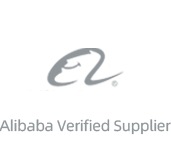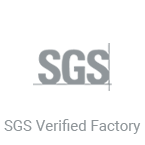Seamless garment machines are an essential component of the modern garment manufacturing process, particularly for the production of seamless apparel such as underwear, sportswear, yoga wear, bras, T-shirts, and more. These machines play a crucial role in enhancing production efficiency, optimizing product quality, and reducing overall manufacturing costs. Unlike traditional sewing techniques, seamless garment machines enable automated production, cutting, bonding, and joining of garments using advanced technology and precision, helping manufacturers stay competitive in a fast-evolving market.
This ultimate guide provides a comprehensive overview of seamless garment machines, including their types, applications, working principles, purchasing guidelines, and best practices to maximize their potential in the production process.
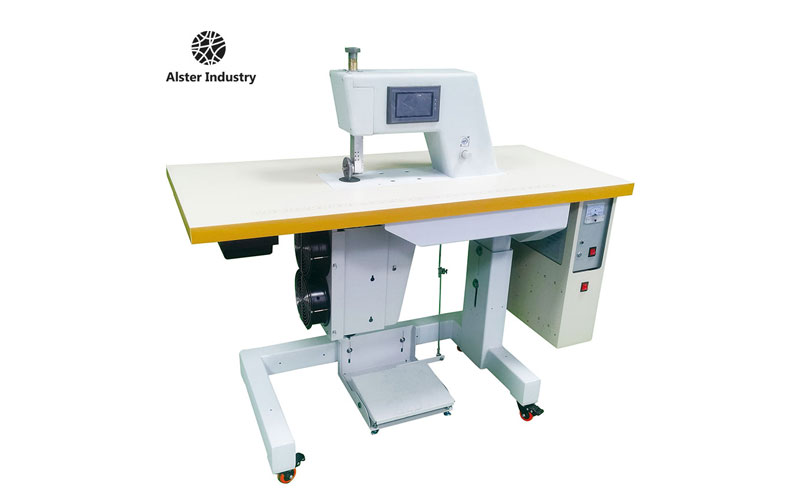
1. Types of Seamless Garment Machines
Seamless garment machines from Alster come in various types, each designed to perform specific functions such as cutting, bonding, stitching, trimming, and more. The most common types include:
Seamless Stitching Machine
The seamless stitching machine is one of the most widely used pieces of equipment in seamless garment manufacturing. It uses specially designed stitches to seamlessly connect fabrics, eliminating the need for traditional seams that can be uncomfortable and bulky. These machines are commonly used in the production of tights, underwear, yoga clothes, and other garments. By precisely joining multiple fabric pieces, the seamless stitching machine ensures flat and strong seams, improving both comfort and durability.
Bonding Machine
Bonding machines are designed to create seamless connections between fabric layers using hot melt adhesives or hot melt films. These machines are typically used in the production of seamless underwear, bras, and other apparel. By applying heat and pressure, the bonding machine fuses the fabrics together without the need for sewing, thus speeding up production while reducing labor costs. This technology is particularly effective in producing smooth, seamless garments that provide a more comfortable fit.
Trimming Machine
The trimming machine is used to process and finish the edges of seamless garments. It removes excess fabric, ensuring that the final product looks neat and polished. Trimming is especially important in garments like underwear, sportswear, and other close-fitting items. This machine helps improve the overall appearance and durability of the finished product, ensuring clean, smooth edges that prevent fraying or damage.
Hemming Machine
Hemming machines are used to add hems or finishing strips to the edges of seamless garments. These machines enhance the overall structure of the clothing and improve its visual appeal. Hemming is essential for ensuring that each garment’s edges are uniform, flat, and well-constructed. The hemming process also increases the durability and strength of the garment, especially in high-stress areas.
Sealing Machine
Sealing machines play a vital role in the production of outdoor clothing, such as waterproof, windproof, and cold-resistant garments. These machines seal the seams of the clothing by applying heat to adhesive films or hot melt adhesives. The result is a secure, waterproof connection that enhances the garment’s protective capabilities. Sealing machines are commonly used in the production of outerwear, particularly for extreme weather conditions.
Connecting Machines
Connecting machines are used to join different parts of a seamless garment, ensuring the fit and comfort of the final product. These machines use various technologies, including stitching, bonding, or ultrasonic welding, to seamlessly connect parts such as the waistband, straps, or sides of a garment. They are widely used in the production of sports bras, yoga wear, and other clothing that requires a flexible and snug fit.
Ultrasonic Bar Tacking Machine
Ultrasonic bar tacking machines use ultrasonic technology to securely bond the edges of fabric pieces. The high-frequency vibrations produced by the ultrasonic system melt the fabric at the molecular level, creating a firm, seamless bond without the need for traditional stitching. This method is particularly beneficial for producing seamless underwear, bras, and sportswear, where comfort and a smooth finish are paramount.
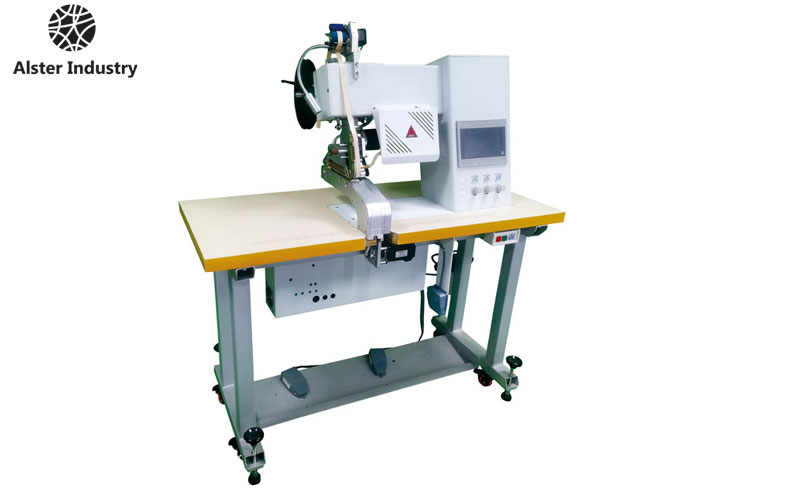
2. Applications of Seamless Garment Machines
The versatility of seamless garment machines makes them suitable for a wide range of products, particularly tight-fitting and functional apparel. Common applications include:
Seamless Underwear
Seamless underwear is one of the most prominent applications for seamless garment machines. By using seamless stitching, bonding, and trimming machines, manufacturers can produce underwear that is not only more comfortable but also has a smoother, more streamlined appearance. Seamless underwear eliminates the discomfort and irritation caused by traditional seams, making it highly popular among consumers.
Sportswear and Yoga Wear
Sportswear and yoga wear require high levels of comfort and flexibility. Seamless garment machines provide these benefits by offering a more form-fitting and comfortable garment with fewer seams. The seamless stitching and bonding techniques used in these machines ensure that the garments provide the necessary support, freedom of movement, and breathability required during physical activity. Additionally, joining and trimming machines help to enhance the durability and elasticity of the fabric.
Bras
Bras, as a form-fitting garment, require seamless technology to ensure comfort, support, and an optimal fit. Seamless stitching and bonding machines enable the precise and comfortable joining of bra components, helping avoid the marks or discomfort that can arise from traditional stitching. The use of these machines ensures that the garment fits snugly without restricting movement, making it an essential technology in modern lingerie production.
Outdoor Protective Clothing
Seamless garment machines are also widely used in the production of outdoor protective clothing, such as waterproof, windproof, and insulated jackets. Sealing and bonding machines are critical for ensuring that the seams of the garments are sealed effectively, offering enhanced weather protection. These machines are particularly useful for outdoor gear that needs to withstand harsh conditions, making them an essential part of high-performance outerwear production.
T-Shirts
Seamless technology is also applied in the production of T-shirts, particularly in high-end or performance-oriented designs. Seamless T-shirts are more comfortable and have a more tailored fit compared to traditional ones. The use of seamless stitching machines allows for a smoother finish and greater durability, making these garments suitable for daily wear, sports, and fitness activities.
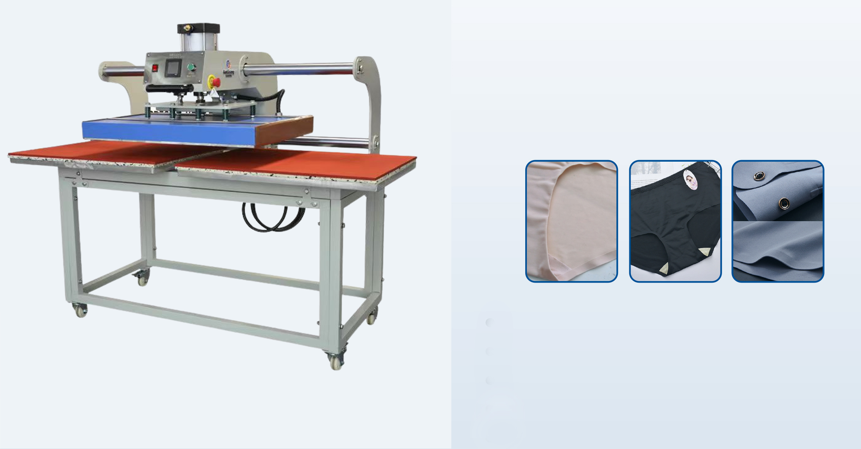
3. Working Principle of Seamless Garment Machines
The working principles of seamless garment machines mainly rely on advanced mechanical design, heat treatment, and ultrasonic technology. For example, a seamless stitching machine uses multi-needle or single-needle sewing systems to connect fabric edges without visible seams. In a bonding machine, heat is applied to hot melt adhesives or films, which fuse the fabric layers together at high temperatures, creating a stable and seamless connection.
Other technologies, like ultrasonic bar tacking, use high-frequency vibrations to bond fabric materials at the molecular level. This process eliminates the need for traditional stitching, simplifying the production process and reducing labor requirements.
4. How to Choose the Right Seamless Garment Machine
When selecting a seamless garment machine, manufacturers should consider several key factors based on their production needs, product types, and technical specifications. Key considerations include:
Product Type
Different seamless garment machines are suited for specific types of products. For example, bra production may require a combination of seamless stitching and bonding machines, while outdoor gear production may rely more heavily on sealing machines. Choosing the right machine for the intended garment will improve production efficiency and ensure the desired quality.
Production Efficiency
The efficiency of the machine directly impacts production speed and cost. High-efficiency machines can significantly increase output while maintaining consistent quality. For mass production, automated machines with high throughput are essential, while smaller-scale operations may prioritize versatility and ease of operation.
Equipment Performance
The reliability, accuracy, and automation level of the equipment are crucial for successful garment production. Machines with higher automation levels reduce the need for manual intervention, lowering the risk of errors and increasing overall efficiency. It’s important to assess the stability and precision of the equipment to ensure high-quality results.
After-Sales Service
After-sales support is an essential factor when choosing a machine. A reliable supplier should provide timely maintenance, troubleshooting assistance, and technical support. Ensuring that the machine will be well-supported throughout its operational lifespan is critical for minimizing downtime and maintaining smooth production processes.
Conclusion
Seamless garment machines play a crucial role in modern garment manufacturing by enhancing production efficiency, reducing costs, and improving product quality. As seamless technology continues to evolve, the scope of these machines will expand, making them even more integral to the production of innovative, high-performance apparel. By choosing the right seamless garment machine and utilizing it effectively, manufacturers can stay ahead in a competitive market and meet the growing demand for high-quality, comfortable, and functional garments.





